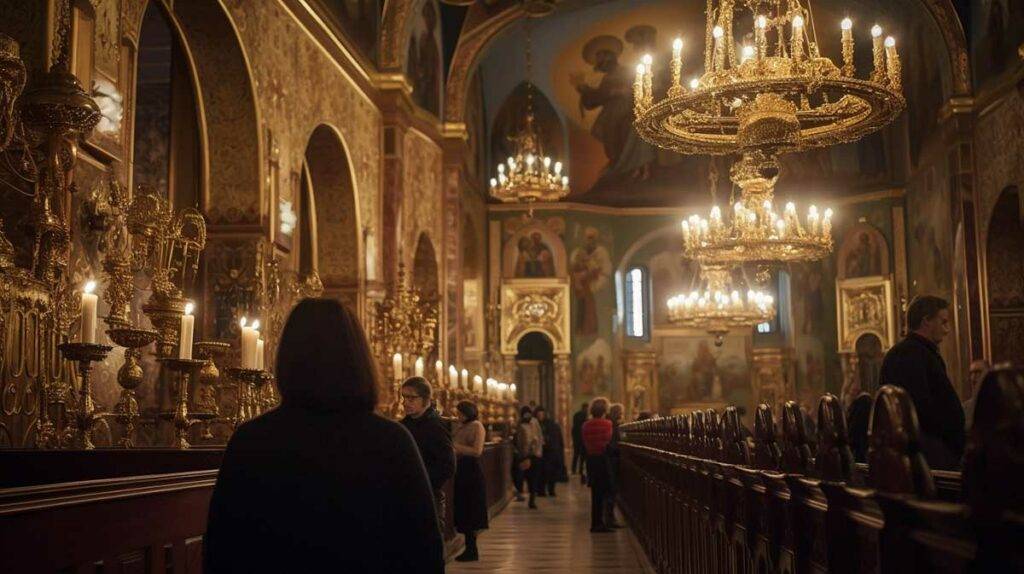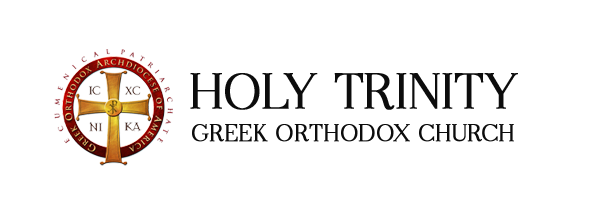How to Participate in Church Services in the Orthodox Church

Introduction
The Orthodox Church is steeped in rich tradition, and attending its services can be a deeply spiritual and transformative experience. If you’re new to the Orthodox faith or visiting an Orthodox church for the first time, you might be wondering how to participate in the services. This article will guide you through the process, providing tips and insights into the unique aspects of Orthodox worship.
Preparation for the Service
Proper Attire
When attending an Orthodox service, dress modestly and conservatively. Men should wear long pants and a collared shirt, while women should wear a dress or skirt that falls below the knee and a blouse that covers their shoulders. It is also customary for women to cover their heads with a scarf.
Fasting
Fasting is an important aspect of Orthodox spirituality. Before attending a service, especially the Divine Liturgy, it is customary to fast from food and drink (including water) for at least three hours. This helps to prepare the body and soul for receiving Holy Communion.
Prayer
Prior to attending a service, spend some time in prayer. This helps to quiet the mind and heart, allowing you to enter the church with a spirit of humility and reverence.



Participating in the Service
Attendance
Arrive at the church early, allowing yourself time to find a seat and settle in. Orthodox services generally do not have fixed seating, so you may stand or sit as you feel comfortable. It is customary to stand during certain parts of the service, such as the Gospel reading and the consecration of the Holy Gifts.
Chanting and Singing
Orthodox services are filled with beautiful hymns and chants. You are encouraged to join in the singing, even if you are unfamiliar with the language or melodies. Follow along with the congregation, and in time, you will become more comfortable and confident in participating.
Reverence
During the service, show reverence by crossing yourself at appropriate times and bowing your head in prayer. When the priest or deacon carries the Gospel or Holy Gifts in procession, it is customary to bow as they pass.
The Divine Liturgy
The Divine Liturgy is the central worship service of the Orthodox Church. It consists of three main parts: the Proskomedia, the Liturgy of the Word, and the Liturgy of the Faithful.
The Proskomedia
This is the preparation of the bread and wine for the Eucharist. It takes place before the main
service and is usually done privately by the priest and deacon.
The Liturgy of the Word
This portion of the service includes the reading of the Epistle and Gospel, as well as the priest’s sermon. Listen attentively to the readings and the sermon, as they provide spiritual guidance and nourishment.
The Liturgy of the Faithful
During this part of the service, the bread and wine are consecrated as the Body and Blood of Christ, and the faithful receive Holy Communion. Pay close attention and participate reverently in this sacred moment.
Receiving Holy Communion
Proper Disposition
Before approaching to receive Holy Communion, ensure that you are in a state of grace, having recently confessed your sins and maintained the prescribed fast.
Approach
When it is time to receive Holy Communion, join the queue and approach the chalice with reverence. Hold a liturgical cloth under your chin to catch any particles of the consecrated bread.
Prayer After Communion
After receiving Holy Communion, return to your place and offer prayers of thanksgiving. This is a time to reflect on the gift of Christ’s presence in the Eucharist.
Venerating Icons
The Significance of Icons
Icons are an integral part of Orthodox worship, serving as windows to the divine. They depict Christ, the Virgin Mary, saints, and biblical scenes, inviting the faithful to contemplate the mysteries of the faith.
How to Venerate Icons
When entering or leaving the church, it is customary to venerate (kiss) the icons. To do so, first make the sign of the cross, then kiss the icon gently, avoiding touching the face of the depicted figure. Finally, make the sign of the cross again.
Engaging in Fellowship
Coffee Hour
Many Orthodox churches host a coffee hour after the Divine Liturgy. This is a time for parishioners to socialize and enjoy refreshments. Visitors are always welcome, so feel free to join in and get to know the community.
Parish Activities
Orthodox parishes often offer various activities, such as Bible studies, youth groups, and charity projects. Participating in these events can help you deepen your understanding of the faith and build connections with fellow parishioners.
Other Orthodox Services
Vespers
Vespers is an evening prayer service that takes place on Saturdays and on the eve of major feast days. It is characterized by beautiful hymns, psalm readings, and prayers.
Matins
Matins is a morning prayer service that precedes the Divine Liturgy on Sundays and feast days. It includes psalm readings, hymns, and the chanting of the Gospel.
Feast Day Services
On major feast days, the Orthodox Church celebrates with special services that include processions, blessings, and the reading of specific prayers and hymns.
Tips for Orthodox Newcomers
Be Respectful
When attending an Orthodox service for the first time, be respectful of the customs and traditions, even if they are unfamiliar to you.
Observe and Learn
Pay attention to the actions of the congregation, and don’t be afraid to ask questions if you need guidance or clarification.
Conclusion
Participating in church services in the Orthodox Church can be a deeply enriching and spiritually fulfilling experience. By following the guidelines and tips provided in this article, you can confidently and respectfully engage in Orthodox worship.
FAQs
- What should I wear to an Orthodox Church service?
Dress modestly and conservatively, with men wearing long pants and a collared shirt, and women wearing a dress or skirt that falls below the knee, a blouse that covers their shoulders, and a headscarf. - Do I need to fast before attending an Orthodox service?
It is customary to fast from food and drink (including water) for at least three hours before attending the Divine Liturgy. This helps prepare the body and soul for receiving Holy Communion. - Can I participate in the singing and chanting during an Orthodox service?
Yes, you are encouraged to join in the singing and chanting, even if you are unfamiliar with the language or melodies. Follow along with the congregation, and in time, you will become more comfortable and confident in participating. - How do I venerate an icon in an Orthodox Church?
To venerate an icon, first make the sign of the cross, then gently kiss the icon, avoiding touching the face of the depicted figure. Finally, make the sign of the cross again. - What other services can I attend at an Orthodox Church besides the Divine Liturgy?
Other services include Vespers (evening prayer), Matins (morning prayer), and special feast day services. These services provide additional opportunities for prayer, reflection, and spiritual growth.
External Links
- Orthodox Church in America: Introduction to Orthodox Worship – This link provides a comprehensive overview of Orthodox worship, including the structure and meaning behind various services and customs.
- Title: Introduction to Orthodox Worship
- Description: Gain a deeper understanding of the traditions, structure, and elements of Orthodox worship with this informative resource from the Orthodox Church in America.
- Ancient Faith Ministries: Orthodox Podcasts and Blogs – This website offers a vast collection of podcasts, blogs, and resources on Orthodox Christianity, providing insights into various aspects of the faith, including worship practices.
- Title: Orthodox Podcasts and Blogs
- Description: Explore a wealth of Orthodox Christian resources, including podcasts and blogs, to deepen your knowledge and appreciation of Orthodox worship and spirituality.
